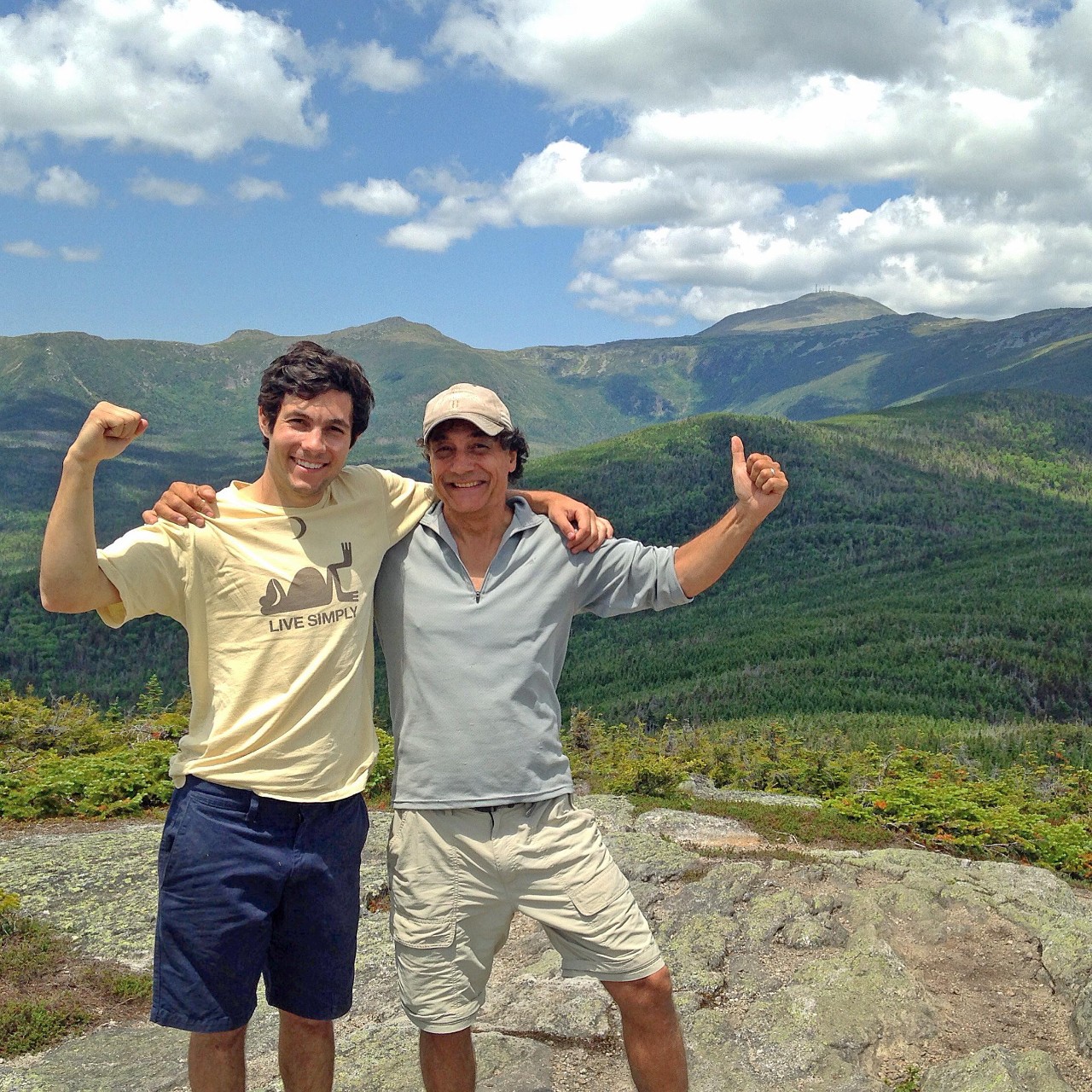Shown here as seen from the Lakes of the Clouds, New Hampshire's Mount Washington, at 6,288.2 ft, is the most prominent mountain east of the Mississippi River. (Image: Danielc192 CC BY-SA 3.0 Wikimedia Commons)
Time away from the Heights during summer break? For one Boston College faculty member, that's a question of capitalization.
For O'Neill Professor of American Politics R. Shep Melnick, this summer brought his induction into the Appalachian Mountain Club’s White Mountain Four Thousand Footer Club, whose members each have climbed to and from the summits of the Granite State’s 48 recognized 4,000-foot peaks.
He reached the final peak, Mt. Isolation near Mt. Washington, accompanied by his son, Hale, who graduated from Boston College Law School in 2017.
Melnick, who also co-chairs the Harvard University Program on Constitutional Government, focuses his research and writing on the intersection of law and politics. His first book, Regulation and the Courts, examined judicial influence on the development of environmental policy. His second, Between the Lines, investigated the ways in which statutory interpretation has shaped a variety of entitlement programs. This year, he published The Transformation of Title IX: Regulating Gender Equality in Education (Brookings Institution Press 2018) which examines how the civil rights-era law has both reshaped American society and contributed to the country’s ongoing culture wars.
Climbing all 48 4,000-footers, he says, was nearly as hard as writing a book—but with much more immediate gratification.
A New Hampshire native who has remained a resident of the state throughout his Boston-area teaching career, Melnick grew up in the middle of the White Mountains, "doing some hiking and even more skiing, mainly in Franconia Notch," he said.
Though he had climbed several of the 4,000-footers while in high school and college, the quest to take on the 48 was born when he began taking his two children hiking in the mid-1990s.
"In 1996, we did our first overnighter, carrying our tent, sleeping bags, food, and cook stove. At that time Hale was 8 and Hanna 11. The next year we went out for two nights. Those years we got so wet that I feared they would never want to go back—but they did. So we increased to three, four, and five nights, sometimes on tent platforms and sometimes in self-made campsites. Each year they carried a bit more and I carried less."
By the time Hanna and Hale left for school, in California and Colorado respectively, Melnick realized that he had "bagged" more than half the N.H. 4,000-footers. "So I started to pick off the rest," he said, "sometimes with my wife, Joanne, and sometimes with Hanna and Hale when they came back home."
Some of those hikes were great, taking them to parts of the White Mountains they had never seen before; others less so, he said. "There are several mountains that are difficult climbs with no view," he said. "The only people who do them are those going after the last 4,000-footers. Everyone leaves them for last. If you see anyone on these trails, odds are they are on the quest."
The hikes can be physically demanding, but are well worth it, Melnick said. "I would put doing Mt. Madison (5367’) in one day a good example of this. The toughest, probably, was Owl’s Head, which I did with Hale. The trip is 18 miles round trip, with several difficult water crossings. The last mile is straight up an old landslide—poor footing, no switchbacks, no shade. When you get to the top you see—nothing, no view at all. So you turn around, go back down the slide—even harder than going up—and repeat the nine mile hike."
Boston College Law School enticed Hale to return east from Colorado. He now works for a law firm in Portland, Maine, and has climbed about two-thirds of the 48 peaks. "I expect that eventually he will tire of rock climbing and mountain biking and finish the rest," Melnick said. "He and I did my last peak, Mt. Isolation, near Mt. Washington, together. Mt. Isolation is aptly named, since it is a long trek to get there—over 12 miles round trip. Unlike Owl’s Head, though, it has a great view of the Presidential Range."
Advice for would-be club members, and climbers in general? "First, do it with your kids if possible," said Melnick. "I consider this one of the best things I did as a parent. Both came to love the outdoors. Hale has become a hard-core rock climber—in fact, he was twice featured on the cover of Climbing magazine. Hanna is still in California. She met her husband at a rock climbing gym; they frequently hike and climb at Yosemite. She is expecting her second child, so maybe she can start them out as I did with her and Hale.
"You can get them to appreciate wilderness when they are young," he added, "then they can keep you in shape years later. Most importantly, they can carry more stuff!
"Second, I am always amazed at how many people from the Boston area have never explored the White Mountains, one of the most beautiful parts of the country—and less than three hours away. You don’t need to do all 48 to appreciate that."
—University Communications | August 2018





